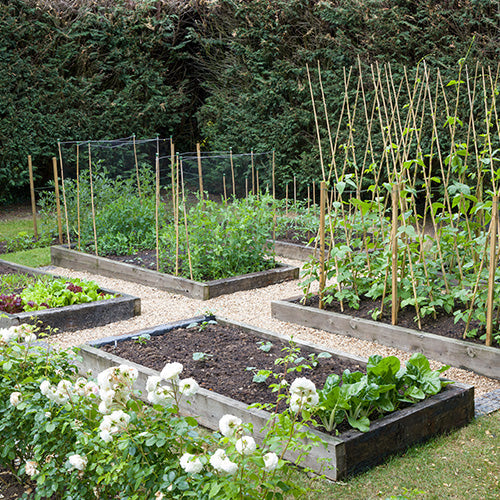Sow your parsnip seeds around February to April, direct in their final growing position. It’s recommended to start parsnip seeds outdoors rather than indoors, as transplanting them can cause roots to become misshapen.
You should sow your seeds a half-inch (1.5cm) deep, spacing the rows 18in (45cm) apart. Although it is normally recommended to start sowing in February, this can lead to failure in colder, northern areas. Sowings made when the soil is warmer in March and April, and even early May, will do much better here. Alternatively, you can warm the soil before sowing with garden cloches or similar and leave them in place until the seedlings have developed two true leaves.
Parsnips can be difficult to germinate, so it’s important that you sow fresh parsnip seeds and adhere to the advice above to sow them at the right time. Germination can take a while, with parsnip seeds taking up to three weeks to sprout, so patience is key.
Water your seeds regularly until they’re well established. When the seedlings are about one inch (2.5cm) high, thin out to 9in (23cm) apart.

 How to Grow Parsnips
How to Grow Parsnips

 Ground Prep
Ground Prep

 How and When to Sow Parsnips
How and When to Sow Parsnips

 Plant Care
Plant Care

 Harvesting
Harvesting

 Problems
Problems

How to Grow
Ground Preparation
Sowing
Plant Care
Harvesting
Problems














Leave a comment
All comments are moderated before being published.
This site is protected by hCaptcha and the hCaptcha Privacy Policy and Terms of Service apply.